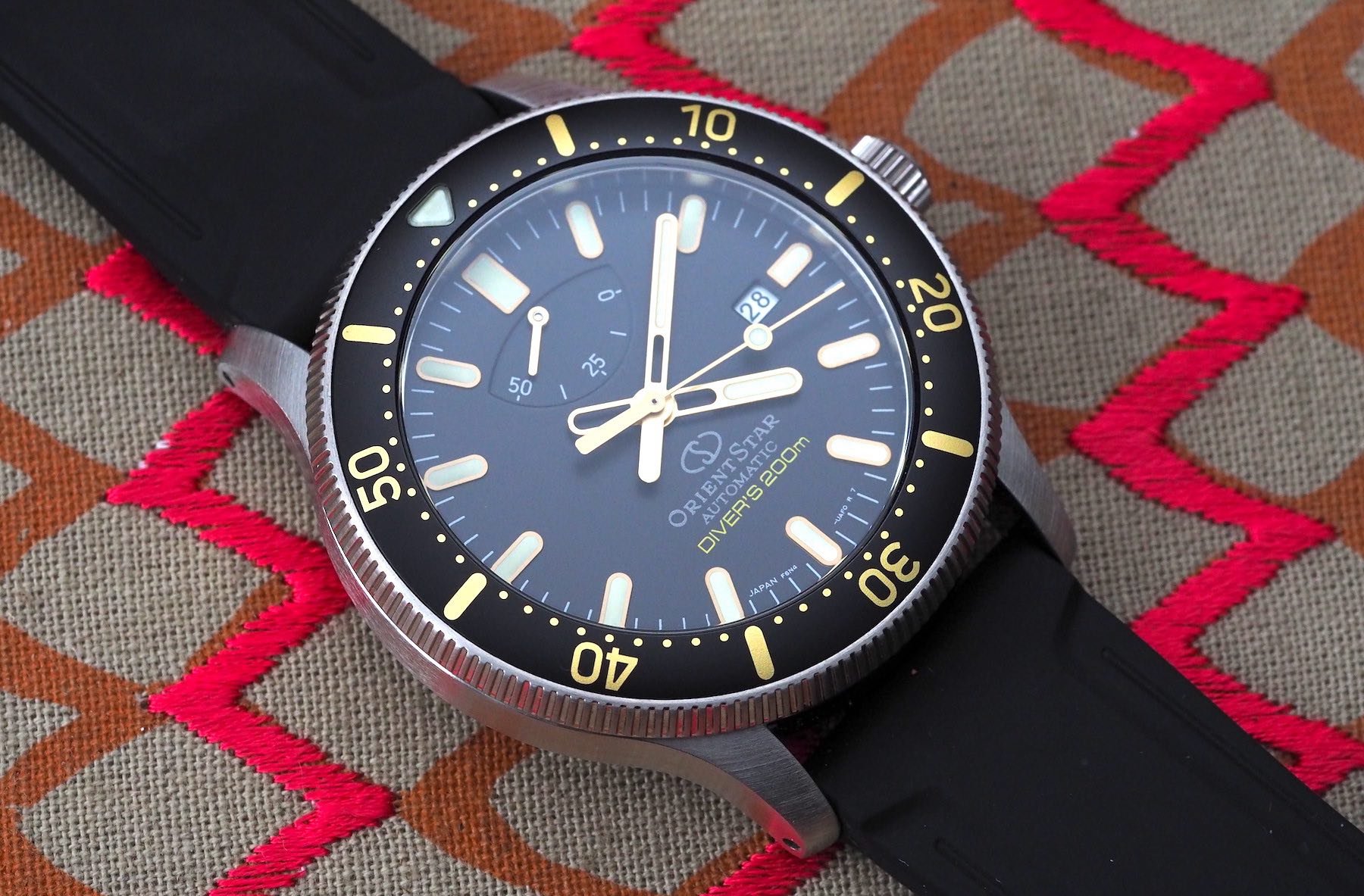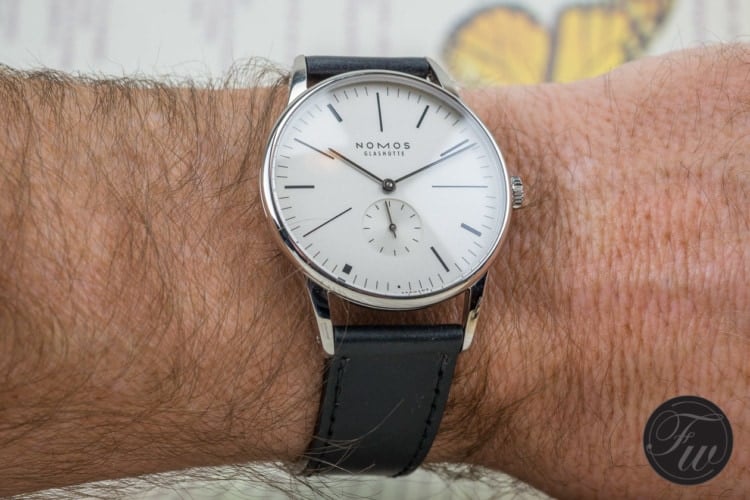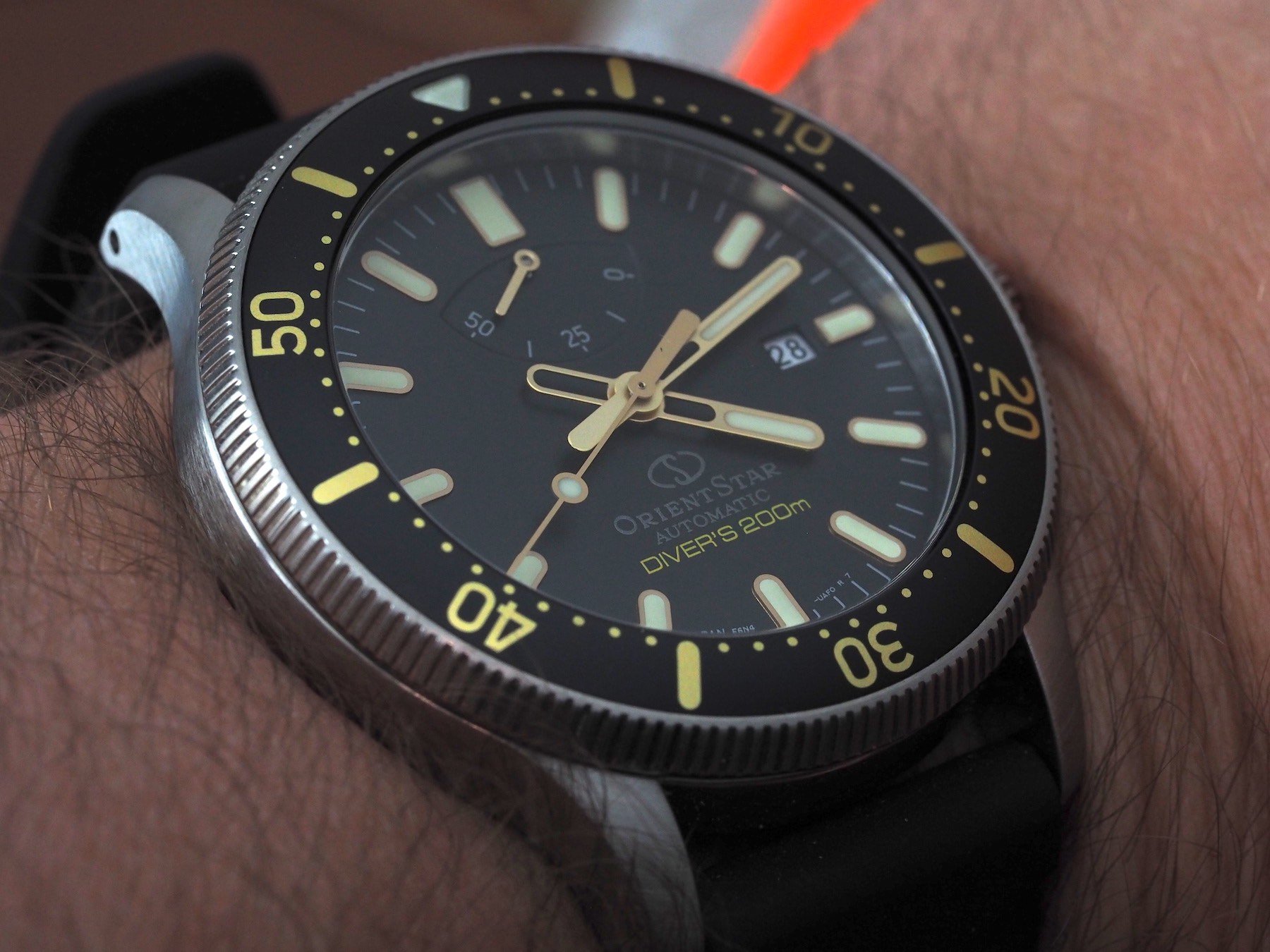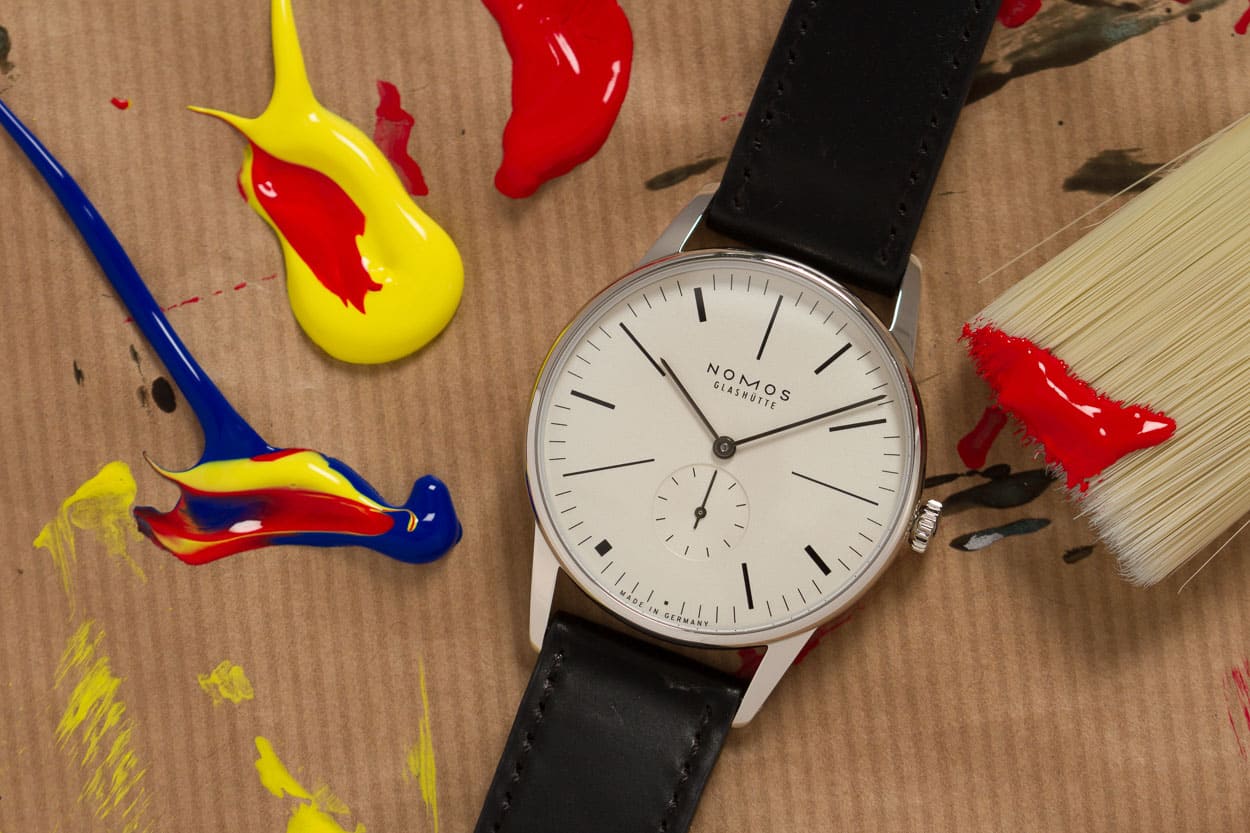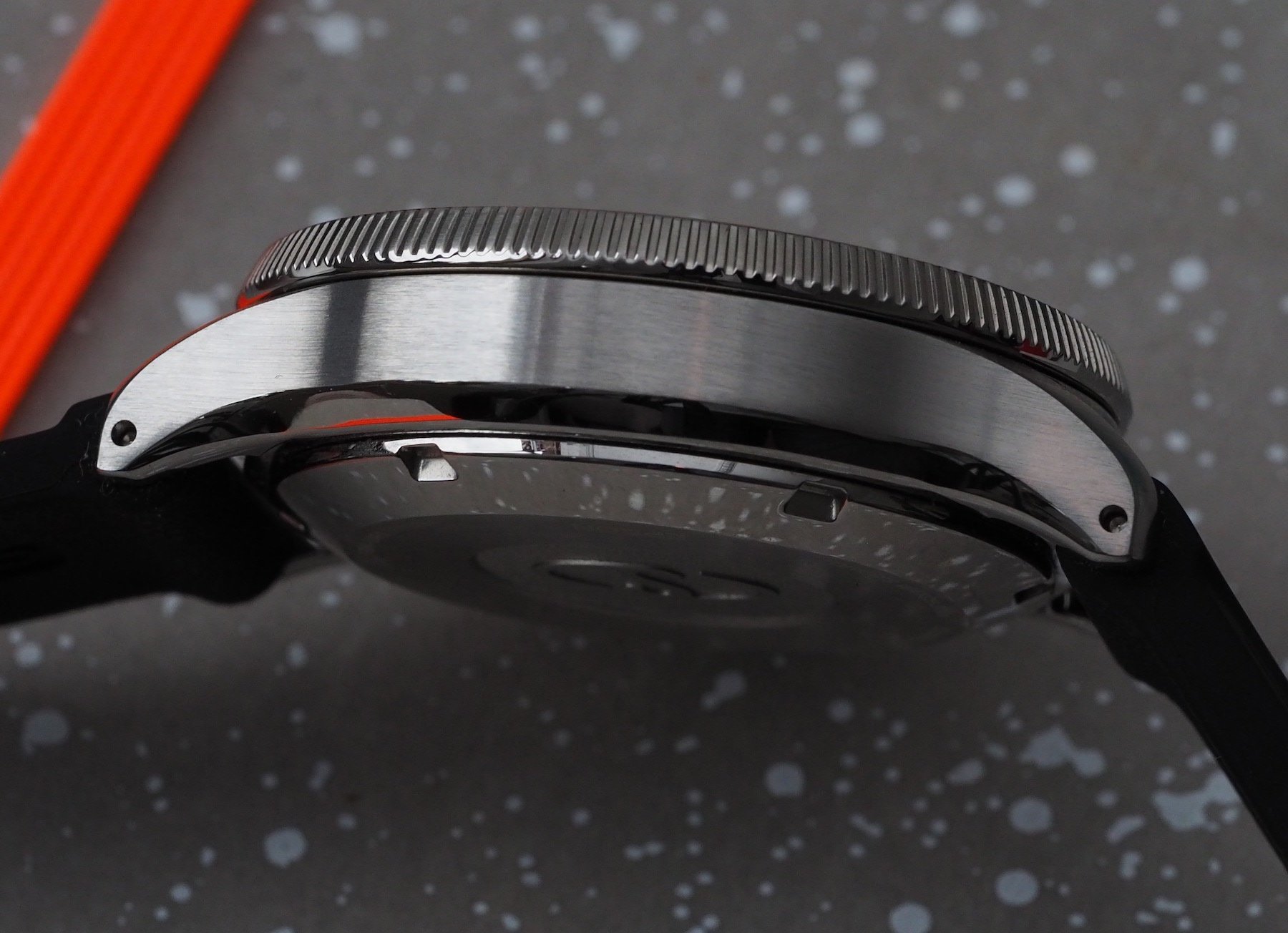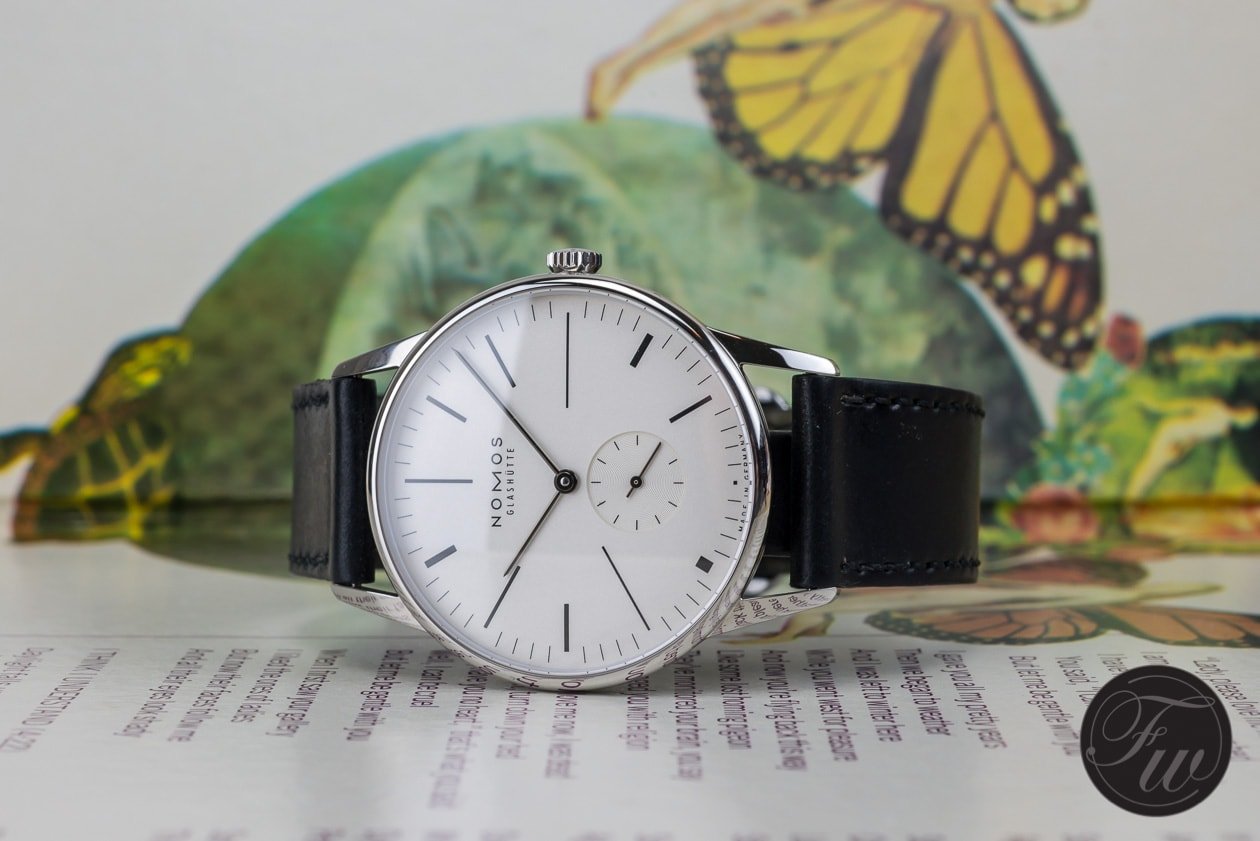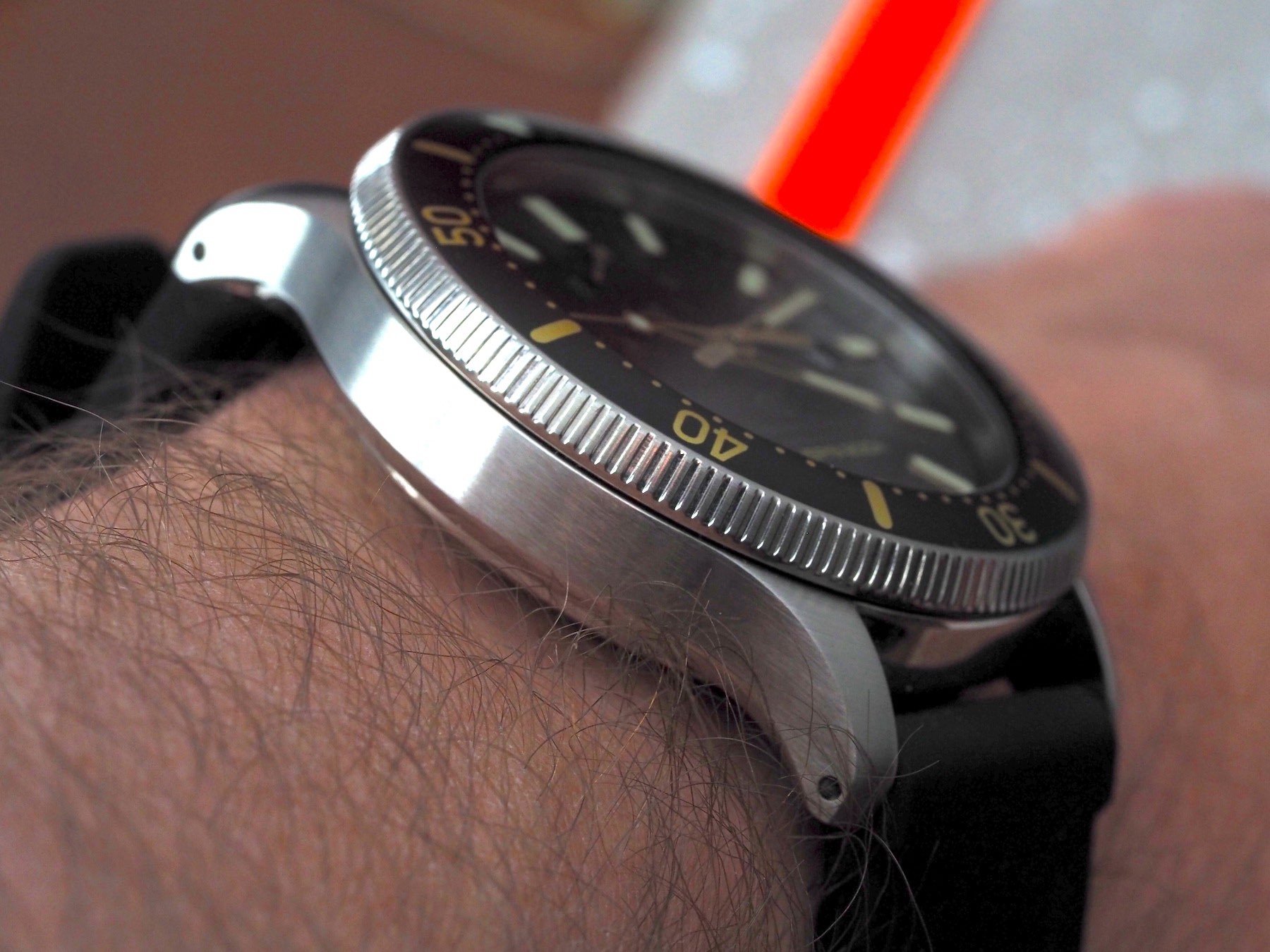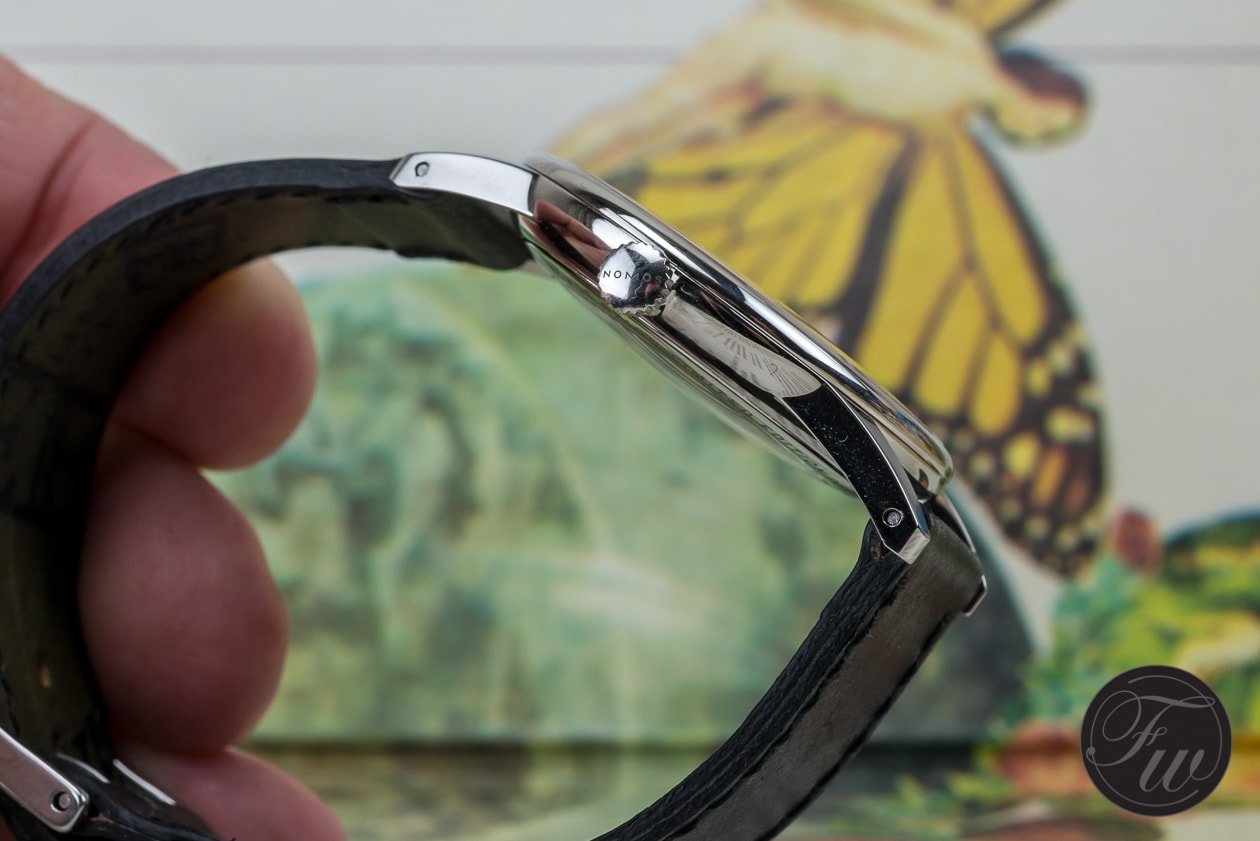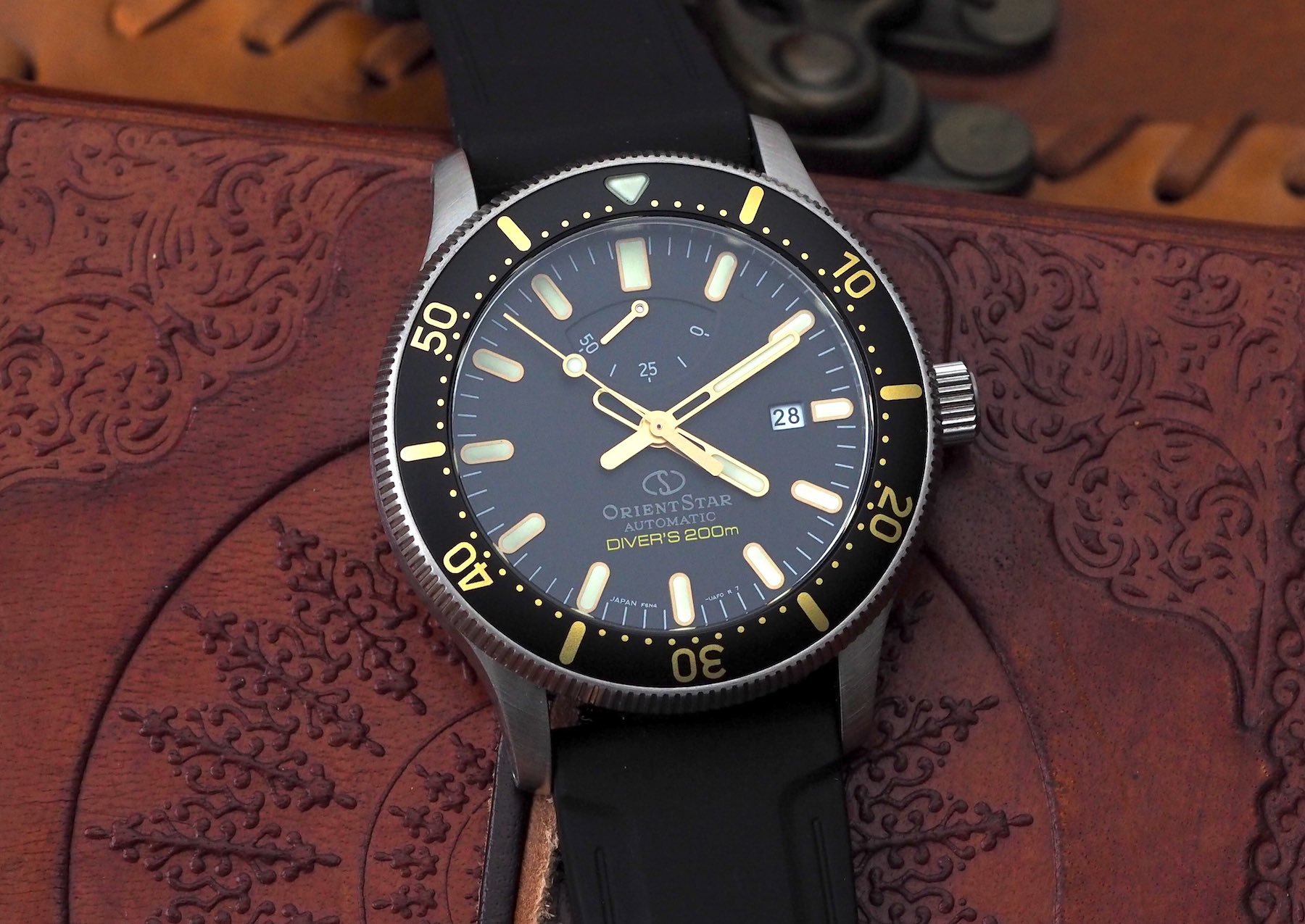Rethinking Diameter Measurements With The Visual Impact Index
Have you ever read the diameter of a watch and instantly dismissed it as too small or too big for your wrist? We see this a lot. Oftentimes, in comment sections particularly, readers express a violent allergy to certain diameters. But the reality is that watch diameters on paper rarely reflect the way they look in real life. As such, I’ve started working on a formula that can give watch collectors a better idea of real-life appearance. I hope that we can refine it together and that it will become of some use to the wider WIS community.
Since initial publication 7 am CET, July 17th, I’ve made a couple of explanatory updates and added a couple more dial elements, redefined the “bezel” for the sake of this exercise, reorganized the calculation tool to make it simpler, and continued to work on the follow-up wearability index. Please join in the fun in the comments section below and let us know how your favorite watch’s diameter and how it scores in the VII.
You might think I have too much time on my hands. Well, you’d be right. Time is pretty much all I have on my hands. I have it on my hands, on my wrists, in my pockets, riddled through my dreams, and always on my mind. Watchmaking is my life. And — lucky boy that I am — I’m able to spend an inordinate amount of my life working with watches in the metal. However, as wide a selection of the industry’s offerings as I see pass over my desk and through my hands as I do, I cannot see or hold everything. No one can. And part of the skill of watch reviewing is being able to accurately judge a watch remotely.
Data>information
Most of the time, all we have to go on is the spec sheet you could just as easily find for yourself on any decent brand’s website. The craft of reviewing requires us to interpret and accurately represent that data so that it becomes useful and usable information for you, our readers. Perhaps the area of greatest consternation is watch diameter. Few things annoy me more than reading instant dismissals from “macho dudes” in the comments section proclaiming that anything below, say, 42mm is a “wuss’s or women’s” watch. It’s boneheaded. And yeah, I would say that to your face too. Why? Because I’m right. And also because I’m really quick… An essential attribute for mouthy little gits…
Reality check
Firstly, genderizing watches these days is pretty pointless. Yes, it is fair to draw generalizations. And yes, that is exactly how brands decide which demographics to target with their advertising. It is a totally sound sales strategy to preach to the majority. I’m not going to hang out brands to dry for it. Taking the easy route has always been appealing, after all…
I also don’t think that yelling at someone that a 38mm watch is “too small” makes for a very inclusive environment.
But the truth is, there are no rules anymore. There’s a reason why a lot of Swiss watchmaking ads are painfully sexist and/or anachronistic — our industry has a well-earned reputation for being a bit Jurassic when it comes to social awareness. Even if the adverts are targetted at YOU (as they are almost always targetted at ME), you might sometimes find yourself asking if any of that silliness is really necessary anymore. Is it constructive? Does it encourage more people to join us in our obsession? I don’t think so. I also don’t think that yelling at someone that a 38mm watch is “too small” makes for a very inclusive environment. Especially when that yeller might well be wrong…
A note on wearability
Here’s an important distinction: this is not a wearability index. Initially, that was the working title. Then I realized it didn’t make sense. Wearability comes down to some of the watch’s physical characteristics (such as the all-important lug-to-lug measurement, which is excluded here) but it is far more about the wearer’s personal dimensions. It gets complicated because it isn’t just about wrist size either. It is also about wrist shape, skin tone, arm length, overall build, and, I suppose, potential allergies (feel free to extend this list in the comments section if you have personally noticed something odd during your watch-wearing experience).
When it comes to wearability, personal taste is, of course, a massive factor also.
I, for example, am a short-but-broad man with tiny wrists, thick forearms, and wide hands (installed with creepily short fingers, but I leave that off my LinkedIn profile). I also have a pronounced ulna styloid and a flat-topped wrist, which measures a trifling 16.5cm in girth. However, those (oddly Hobbitish) proportions add up. As such, I can wear much bigger watches than you might expect without them looking (entirely) ridiculous. But, then again, if you follow my Instagram account, you may have cause disagree. And that is okay. When it comes to wearability, personal taste is, of course, a massive factor also.
The Visual Impact Index
The Visual Impact Index is concerned with whether the watch is “true-to-size”, or whether it appears bigger or smaller than an established median. The factors concerning a watch’s visual index are perhaps a little more quantifiable but by no means absolute. However, by implementing my current formula across about 100 watches, I’m satisfied that the outcomes are instructive if not without exceptions. The three factors I have taken into account for the VII are the case diameter/height ratio, “bezel” thickness, and dial “complexity”. The first three measurements are empirical while the fourth attribute is a little more subjective. To that end, I have included guidelines to be applied with common sense in an attempt to get as accurate a result as possible.
Establishing a median
So here’s the crux of the whole formula. What are the “ideal” proportions for a watch? You might think this is entirely subjective (and you might be right). But I think I might have unearthed an answer that fits so neatly with one of the oldest, most established design principles the world has ever known that it should not be ignored. That’s right, people. The Golden Ratio strikes again.
Already, I believed I was close…
The golden ratio pops up in design everywhere. When rounded to a single decimal point, the golden ratio equals 1/1.6. In awareness of this figure, I actually worked backward from what I spuriously regarded as “typical” watch dimensions to try and get as close an answer to “1.6” as possible.
To begin, I started working with a case diameter of 40mm. I then estimated that a “normal/desirable” thickness for a watch of such proportions was about 12mm. I started by dividing the diameter by the thickness. The result of this calculation left me with a score of 3.33r. Although that was miles away from the 1.6 I was chasing I noticed it was almost exactly double. Already, I believed I was close.
The radius is key
I’ve never in my life discussed the radius of a watch with anyone, but here we are. I decided that the thickness of the watch should be compared with the radius of the watch rather than the diameter. This seemed to make some kind of intuitive sense to me as the watch’s functions emanate from the center of the dial (in most cases). That said, I still needed to justify the decision to use the radius instead of the diameter with results.
With a radius of 20mm divided by a test thickness of 12mm, I got a score of 1.66r. This suggests that the watch would appear slightly larger than a true-to-size measurement. That meant, according to my theory and the result I was trying the “ideal” watch needed to be slightly thicker.
…it all sounded pretty palatable.
For the sake of round numbers, I bumped the thickness up to 12.5mm and hit the bull’s eye with the first throw. (40mm/2)/12.5=1.6. According to this theory, therefore, the “ideal” thickness of a watch of 40mm is 12.5mm (if we do not adjust the Golden Ratio to a single decimal point, the results would actually read 40mm by 12.360679774997094mm exactly — you’re welcome).
So now I had a simplified working model that seemed to make sense for round watches, at least. I ran it through some other common diameters to see what thicknesses came out as “ideal” and it all sounded pretty palatable. But the formula was not complete without adding in the bezel thickness (the thicker it is, the smaller the watch appears) and the dial complexity (the simpler it is, the larger the watch appears).
Some examples so far
According to this theory, the following diameters are “ideally” suited to the corresponding thicknesses working on a simplified golden ratio of 1.6:
– 36mm×11.25mm
– 38mm×11.875mm
– 39mm×12.1875mm
– 40mm×12.5mm
– 42mm×13.125mm
– 44mm×13.75mm
Watches with the above proportions will score exactly 1.6 before any adjustments have been made for bezel thickness. UPDATE: For the sake of this exercise we will define “bezel” as the distance between the edge of the crystal and the “natural edge” of the case (crown guards do not constitute a “natural edge”).
As I’m writing this article, I have the Orient Star RE-AU0301B divers’ watch on my wrist. It has a hefty 43.6mm diameter and a case thickness of 14mm. That gives it a VII score of 1.56 rounded up from the exact score of 1.5571428571. That means the proportions in themselves are close to our median but thanks to its thickness being 0.25mm over the “ideal” figure it appears a little smaller on paper.
The eye test says this is definitely true. What is clear, also, is that the unidirectional timing bezel makes it seem even smaller than a figure of 1.56 would suggest. Honestly, if I were guessing just from looking at the thing I would say it looks more like 41mm’s worth of real estate. So the question becomes how to continue with this formula so that its final score stacks up against other watches (which is the whole point of this intensely academic exercise).
Pencils at the ready…
Okay, eggheads. Time to shine. Here are the steps I put my Orient Star through for the sake of this test. Try and follow along…
- Divide your case diameter by 2 to find the radius.
- Divide the radius by 1.6 to find the “ideal” thickness.
- Subtract the actual thickness from the “ideal” thickness. This is your “running total”.
- Divide the radius by 100 and multiply it by 16. This gives you the “optimum bezel width”.
- Measure your bezel width. Subtract it from the optimum.
- Divide it by 2.
- Add this to your running total.
- Dial elements subtracted to find “working total”:
- Single date window -0.1
- Day window -0.1
- Month window -0.1
- Linear power reserve -0.1
- More than two lines of text in a contrasting color -0.1
- Sub-dial (going seconds, Power reserve indicator, Chronograph sub-registers, moon phase, 24-hour indicator, second timezone) -0.2 each
- Pointer date -0.2
- Big date -0.2
- Tourbillon -0.2
- Open heart balance -0.2
- Add/subtract the working total from the actual diameter of the watch to establish “visual impact” (rounded to the nearest decimal point).
Working example:
Orient Star 43.6mm×14mm
- 43.6/2=21.8
- 21.8/1.6=13.625
- 13.625-14=-0.375
- 21.8/100×16=3.488
- 3.488-5=-1.512
- -1.512/2=-0.756
- -0.375+ -0.756=-1.131
- -1.131-0.1-0.2=1.431
- 43.6-2.187=42.169
- VII=42.2mm
Deep breath. That wasn’t so hard, was it? The upshot of all this mathematical nonsense is that the realistic perception of my 43.6mm Orient Star dive watch is actually a very unintimidating 42.2mm. Conversely, the NOMOS Glashütte Orion 38 De Stijl I happen to have slipped on while you were blunting lead tells a very different tale…
NOMOS Glashütte Orion 38 De Stijl 38mm×7.9mm
- 38/2=19
- 19/1.6=11.875
- 11.875-7.9=3.975
- 19/100×16=3.04
- 3.04-2=1.04
- 1.04/2=0.52
- 3.975+0.52=4.495
- 5.015-0.2=4.295
- 38+4.295-42.295
- VII=42.3mm
So there you have it. A large watch that is actually perfectible manageable and a “small” watch that looks like a prop from Independence Day just crash-landed on your wrist.
A work in progress
Because I am a sad, middle-aged man living life on the manageable end of a well-known spectrum this kind of task appeals to me. I hope you didn’t find it too mind-numbingly boring and enjoy putting your own watches through this formula. Please, please, please share your results in the comments section below. I’m hopeful that with the right kind of feedback from an active and engaged audience we can further refine this index so it becomes an indispensable tool for buying watches remotely.
You can find more wrist shots of both models on my Instagram @robnudds.

